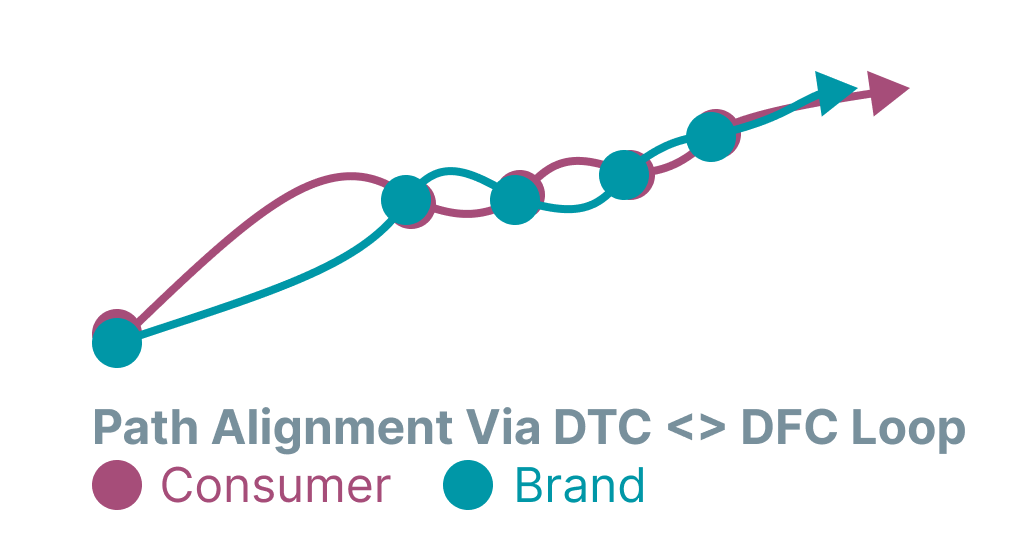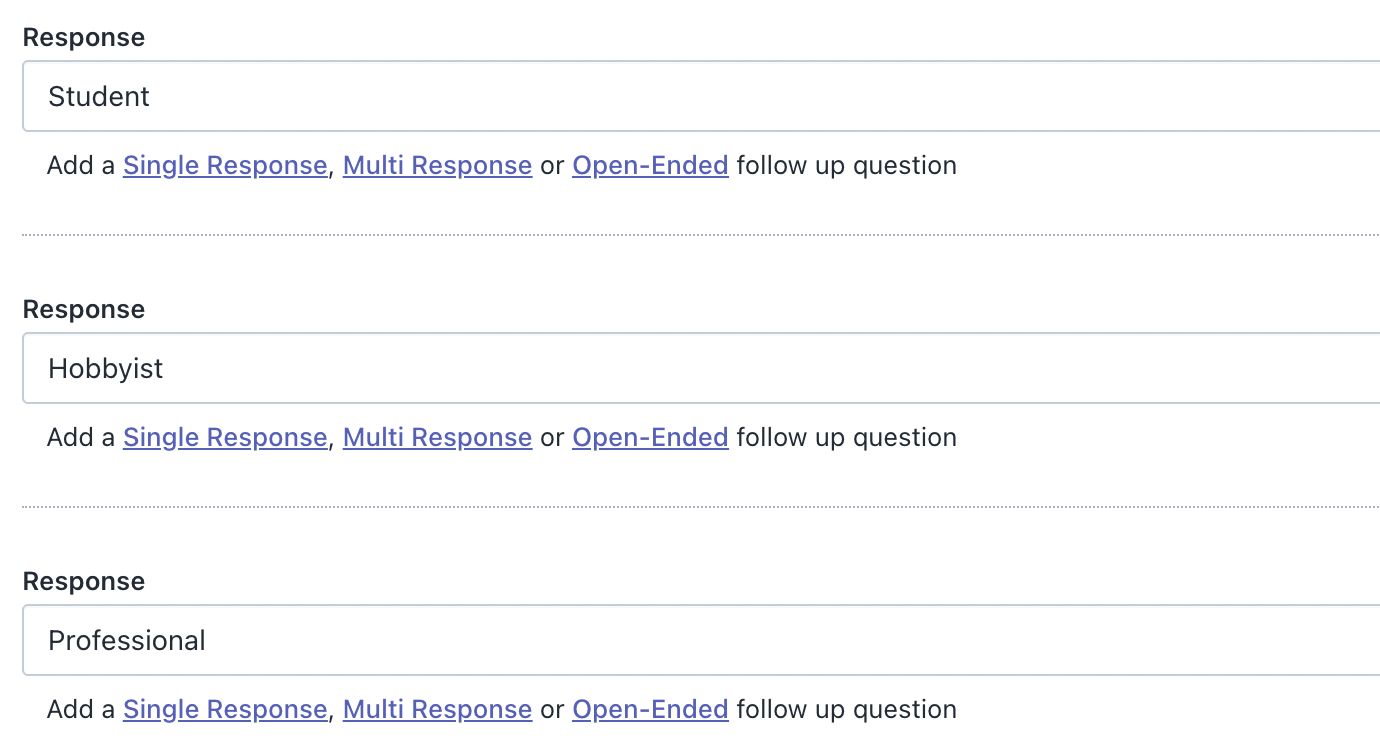What’s The Difference Between A Traditional And A Practical Persona?
Ever felt the frustration of trying to understand someone you've just met? That's a bit like the challenge brands face when trying to "get" their customers. Enter the battlefield of practical personas versus traditional ones.
Think of it like this: practical personas are your close friends, always updating you on their latest stories; traditional ones are like old yearbook photos, a snapshot from a past moment. Which one would you trust more?
What’s The Difference Between A Traditional And Practical Persona?
Let’s time-travel for a second. Remember the days when you had to wait for a handwritten letter? That’s your traditional persona: like receiving a letter by carrier pigeon, slow but treasured. It gives you a glimpse of a snapshot in time, but it doesn’t always capture the ongoing narrative.

Now, imagine the rapid-fire buzz of a text message—that’s the allure of practical personas. They’re nimble, current, and capture what's happening right now.

What Is A Traditional Persona
These personas are like your grandma's antique tea set—beautiful, cherished, but based on old methods. Sure, they might cost a pretty penny to craft, but they often scratch the surface. They focus more on broad details like, "Oh, she likes pastel colors and reads a lot," rather than diving deep into individual quirks and preferences.
And why have they been our go-to for so long, you ask? Well, it's a bit like asking why vinyl records still have a charm despite Spotify and Apple Music ruling the roost. They have a nostalgic quality, a tried-and-tested method that's been around since, well, forever.
How Do You Build Your Traditional Persona
So, you remember the days before instant everything, right? When you actually took time to brew your coffee rather than dashing through a drive-thru? Building a traditional persona is a lot like that slow brewing process. First, there’s the deep dive of market research. And I’m talking about the kind that stretches over seasons, where you slowly soak in survey answers until you have enough information to base your personas on.
Then, there's this eureka moment when you start spotting patterns. It's piecing together a puzzle. You're grouping, segmenting, and sifting through characteristics. “Oh, look! These folks love eco-friendly products, and these are die-hard tech junkies!”
Finally, armed with these segments, they transform into your traditional consumer personas.
How Do You Use Your Traditional Persona
Using a traditional persona? It’s like holding a vintage compass while navigating the wild seas of branding. It points the direction for your marketing strategy, helps sculpt your content, and even shapes the very products you’re dreaming up.
But here's the rub—and I can't stress this enough—traditional personas have their blind spots. They might not always align perfectly with your real-time customers. Think of them like character sketches for a play. They give the essence, the vibe, but without a sprinkling of fresh, real-time data, they're more like fiction. So, while they’re guiding your strategy, always keep an eye out for your real customers to avoid straying off course.
What Is A Practical Persona
Imagine if you could have a coffee chat with each of your users. You’d go beyond just their age or where they live. You'd dive deep, learning their dreams, desires, and dramas. That's the world of practical personas—grounded in direct-from-consumer (dfc) data, treating users as living, breathing stories. Why are they so darn crucial? Because in today's dynamic world, surface-level won't cut it; you've got to dive deep.
How Do You Build Your Practical Persona
Imagine having a magic crystal ball, not the cloudy, vague kind, but one that shows you crystal clear images. That's what Fairing’s Question Stream® and Question Bank feel like. They're your secret tools to getting right inside your customer's heads. It's like having a heart-to-heart, without the small talk. They give you the unfiltered truth, direct from the source, all plugged into your MarTech, ready to roll.
And let's play with some examples here:
“Which Of These Best Describes You?”
Our CEO was tuned into Subscription Radio one evening and shared a zesty tale about a niche electronics brand that thought their clientele was mostly pros, you know, the top-tier techies. Think they're right? Well, they put on their detective hats and popped this simple question to their shoppers, “Which of these best describes you?”

The plot twist? Only 2 out of every 10 were professionals! It's like thinking you're throwing a James Bond-themed party and it turns into a Star Wars fest. This revelation wasn't just an eyebrow-raiser—it was a horizon expander! They saw new avenues, new messages, new everything. And such Eureka moments? That's bread and butter for those who bring Fairing into their toolkit. Just give the 14-day free trial a spin and see for yourself.
But, hang on! When you start piecing this information together with other questions like “How did you hear about us?”, and building segments out of these self-descriptions, you're essentially getting VIP access to the user’s mind. It’s like having secret conversations at the water cooler. Suddenly, you're not just shooting marketing arrows in the dark. You've got infrared vision. Did students find you on Reddit memes, while professionals got wind of you from a podcast? Now, go paint the town with targeted, impactful campaigns. And while you're at it, look at your average order values for these segments. With such precision targeting, you're set to max out on your ROI.

“Who Is This Purchase For?”
When you ask someone, “Who is this purchase for?” – it's not just about the answer. It's about the story behind it.
Are they buying for themselves? A buddy's birthday? A colleague’s farewell? Or is it a surprise? Each of these answers isn’t just data—it's a narrative. Like different genres of a novel.

But here's the kicker: Say someone’s buying it for a friend. Bingo! They’re a buyer, not the end user. It’s an opportunity to tailor-make your content to lure these buyers into becoming users. Think about it—they already know your brand, your product, they've got a friend who loves what you sell. With a nudge in the right direction, they could be your next brand ambassador.
Still thirsty for more? Use Fairing's arsenal of follow-up questions. Dive deeper. "What convinced you to buy this product?" or "Would you ever consider this product for yourself?" And here's my favorite, "How will you describe this product to the recipient?". These aren't just questions; they’re keys to unlock treasure troves of insights.
Which Should You Be Using
Traditional and practical personas are like ingredients in a recipe. One sets the base, the other adds the flavor. They can coexist, but if you're looking for the secret sauce that's both rich and tangy, practical personas are where it's at . They're the GPS guiding you through the ever-evolving terrain of customer preferences.
Getting Started
And there you have it—the duel between personas, each with its own charm. Ready to embark on the journey of truly understanding your customers? Fairing's your ticket. If you're not a Fairing user yet, grab a 14-day free trial . Or if you're more into show-and-tell, book a demo and see the magic happen.
Want to learn how to set up your post-purchase survey for your brand? Read more here.










